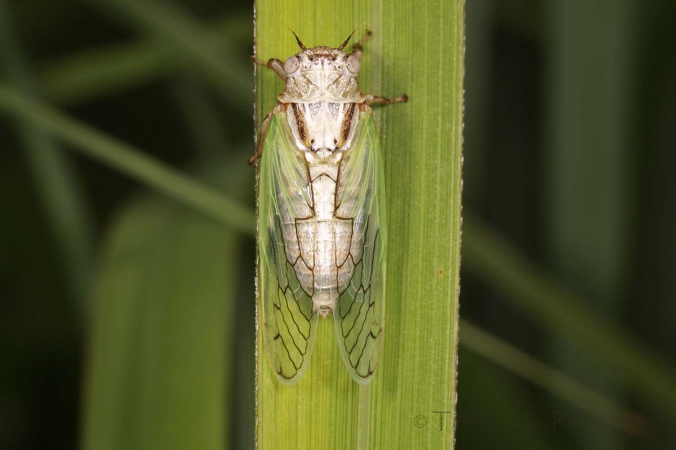In my first post of 2009, I looked back at the photographs I had posted during 2008 and picked some of my personal favorites. I hesitated then to call myself a photographer (and still do), but I at least now have suitable equipment to aid in my progress toward that eventual goal. I have learned much over the past six months in my first attempt at serious insect macrophotography (prioritizing in situ field photographs of unmanipulated subjects as a matter of personal choice). Through this, I’ve come to realize the following skills to be the most important for success:
- Composition
- Understanding lighting
- Knowing how to use a flash
- Knowledge of the subject
I’ll give myself a “A” in the last of these, but in the other areas I still have much to learn. With this caveat, and for the last post of 2009, I offer the following twelve photographs as my final choices for the 2nd Annual “Best of BitB”:
Best beetle
From Revisiting the Swift Tiger Beetle – Part 1 (June 30). A decent enough photograph, especially considering that I’d had my camera for about a month when I took it. However, the discovery of robust populations of this formerly rare and enigmatic species throughout northwestern Oklahoma (and later also in northwestern Missouri) was the most significant find of the 2009 field season, and this photograph is the best capture of that moment.
Best fly
From Overlooked, needle-bellied, thick-headed fly (Aug 14). One of my first good “black background” shots. The white tip of the abdomen compliments the white flower stamens against the background.
Best “true” bug
From North America’s smallest cicada (Aug 4). So many different shades of green with white frosting on the bug’s body. I tried taking this shot in portrait and it just didn’t work—I liked this landscape shot much better.
Best predator
From Prey bee mine (Sept 14). Robber flies are immensely photogenic, especially those in the genus Promachus due to their prominent “beards.”
Best camoflauge
From The “obscure” Dicerca (June 19). Sparkling and gaudy as specimens in a cabinet, the coloration of many jewel beetles actually helps them blend almost perfectly with the bark of their preferred tree hosts.
Best immature insect
From Anatomy of a Tiger Beetle Larva (Oct 22). “Otherwordly” is invariably the first word that comes to mind when someone sees a tiger beetle larva for the first time. I was lucky enough to get this one in profile with a nice view of its abdominal hump and its curious hooks.
Best arachnid
From A face only a mother could love (Oct 6). Despite some minor depth-of-field problems with this photograph, I’m fascinated by its “smile.”
Best reptile
From North America’s most beautiful lizard (July 10). A simply spectacular lizard—all I had to do was frame it well and get the flash right.
Best wildflower
From Great Plains Ladies’-tresses (Dec 7). Few flowers are as photogenic as orchids, even native terrestrials with minute flowers such as this one. I like the frosty texture of the lip and the starkness of the white flower on the black background.
Best natural history moment
From Tiger Beetles Agree—It’s Hot in Florida! (Dec 18). I chose this photo for the classic “stilting” and “sun-facing” thermoregulatory behaviors exhibited by this tiger beetle on a blistering hot day in Florida.
Best closeup
From North America’s longest insect (Aug 21). I haven’t tried a whole lot of super close-up photographs yet. I liked the combination of blue and brown colors on the black background.
Best Landscape
From Sand Harbor Overlook, Nevada (March 23). My choice for “best landscape” again comes from Lake Tahoe. This is not a great photo technically—I was still using a point-and-shoot and had to deal with foreground sun. However, none of the other photos I took during my March visit to the area captivate me like this one. I like the mix of colors with the silhouetted appearance of the trees on the point.
Copyright © Ted C. MacRae 2009
































